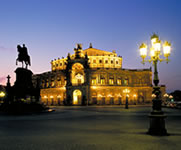Other highlights
Contact
Tourist Information Kiel e.V.
Andres-Gayk-Strasse 31
24103 Kiel
Email:
info@kiel-tourist.de
Internet:
www.kurskiel.de
Andres-Gayk-Strasse 31
24103 Kiel
Email:
info@kiel-tourist.de
Internet:
www.kurskiel.de
Museums

Kiel's Maritime Museum is located in a former fish auction hall on the quayside. Visitors can see models of ships, nautical instruments, naval paintings, figureheads, a "Kaiserpanorama" showing 3D stereoscopic pictures and a panoramic picture of the harbour that measures 27m² and is the largest ever painting of Kiel. The "Brandtaucher" built in Kiel in 1850 by Wilhelm Bauer was the first working submarine in the world and a model of it takes pride of place in the museum. Also open to the public are three vintage ships moored up to the adjacent museum jetty: the "Hindenburg" lifeboat, the "Kiel" fire-fighting ship and the "Bussard", a 1905 buoy layer with a fascinating historical steam engine and boiler room. Open daily. Guided tours available on request.
» www.kiel-tourist.de
The Warleberger Hof municipal museum is housed in the impressive setting of the last 17th century aristocratic residence preserved in its original condition in Kiel's old quarter. Highlights include the impressive stonework with an original sandstone portal as well as historical rooms and vaulted cellars. The museum's exhibition space of almost 500m² is split over three floors and used for special exhibitions documenting the history and culture of Kiel in the 19th and 20th centuries, e.g. the story of the city's carnival, tourism, poster art, Jewish life, Germany's naval and colonial past, satirical drawings and arts and crafts. Open daily.
» www.kiel-tourist.de
The Naval Monument towers 85 metres high above the Baltic coast at the entrance of the Kiel fjord and is visible for miles around. The monument was originally built to remember the members of the Imperial German Navy who died in the First World War, but in May 1954 it became a memorial for seamen of all nations and to commemorate peaceful seafaring on the open seas. Besides the unusually shaped tower, there is also an underground hall of remembrance, a historical hall with many ship models and other naval and maritime history exhibits and a 7,000m² open space covered with sandstone from the river Weser, on a total area of almost six hectares. A Second World War U-995 submarine was converted into a museum in 1972 to present the ideas and objectives of the Naval Monument. Visitors can gain first-hand experience of the suffering and fear faced by those involved in battles at sea.
» www.deutscher-marinebund.de
The Zoological Museum is one of Kiel University's twelve exhibition sites and has a long scientific heritage. More than 200,000 animal species are displayed and explored in an area of about 1,000m², ranging from the gigantic skeleton of a stranded blue whale to mayflies. The bird collection, which numbers approx. 9,000 exhibits, includes a bird of paradise from New Guinea and tropical woodpeckers. Equally fascinating is the "dry collection" with around 60,000 specimens. It includes some 7,000 snail and mussel shells gathered from almost every corner of the globe, as well as butterflies, moths, flies, beetles, heteroptera (true bugs) and hymenoptera (wasps, bees and ants). Closed on Mondays.
» www.kiel-tourist.de
Travel Planner
Select an option...
Map of Germany
Hotels in Kiel
Loading
 Skip to content
Skip to navigation
Skip to subnavigation
Skip to search
Skip to content
Skip to navigation
Skip to subnavigation
Skip to search






